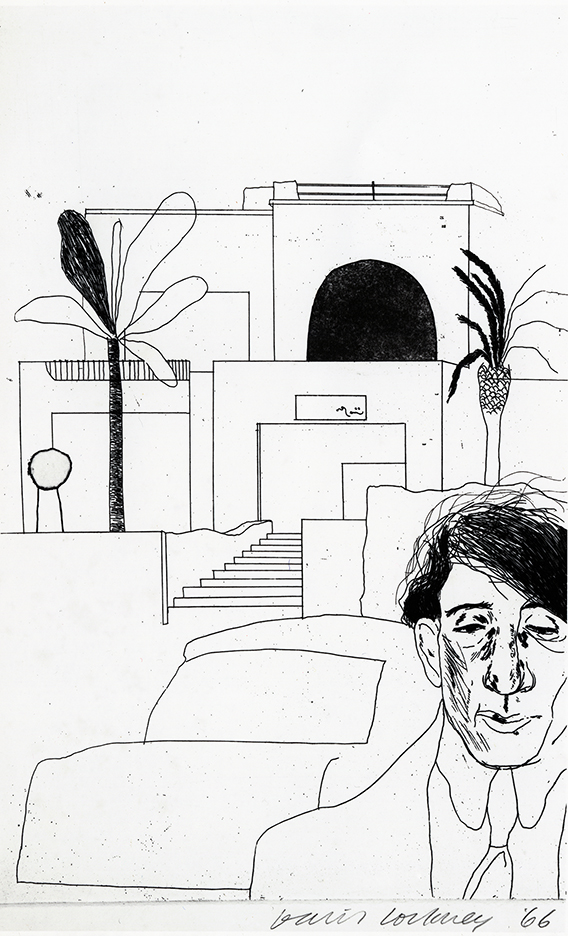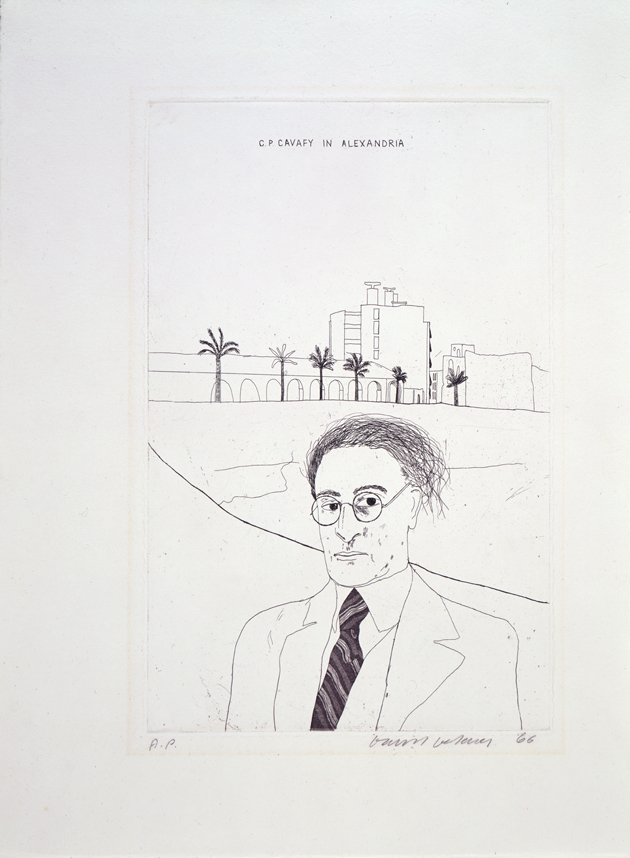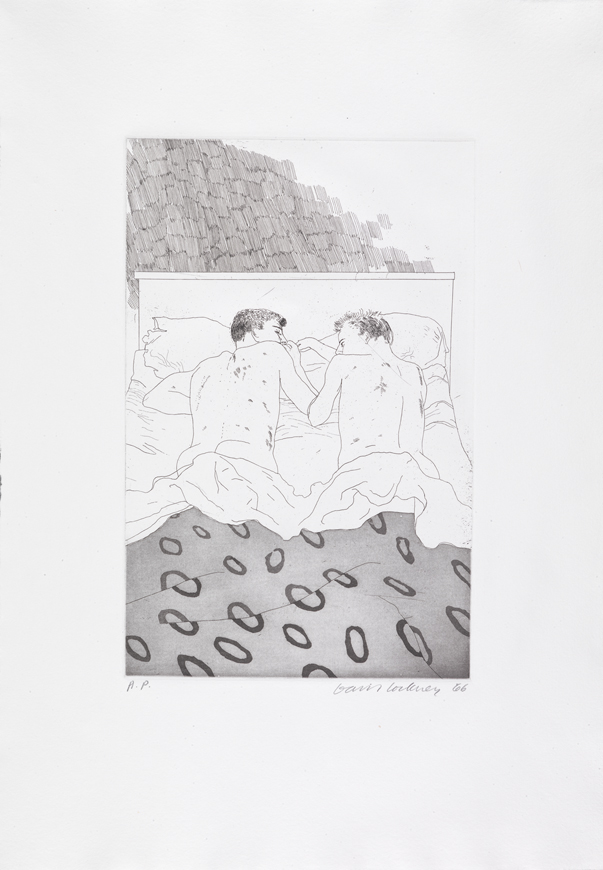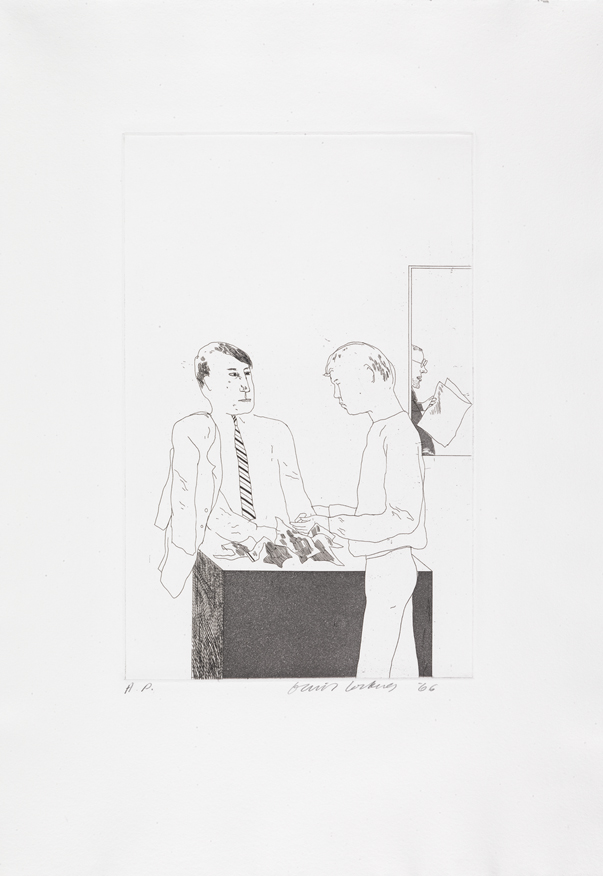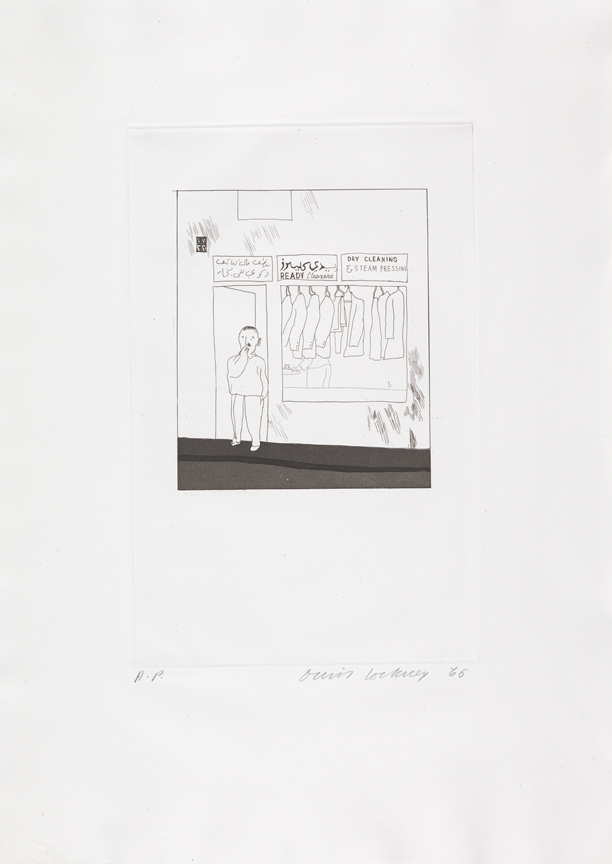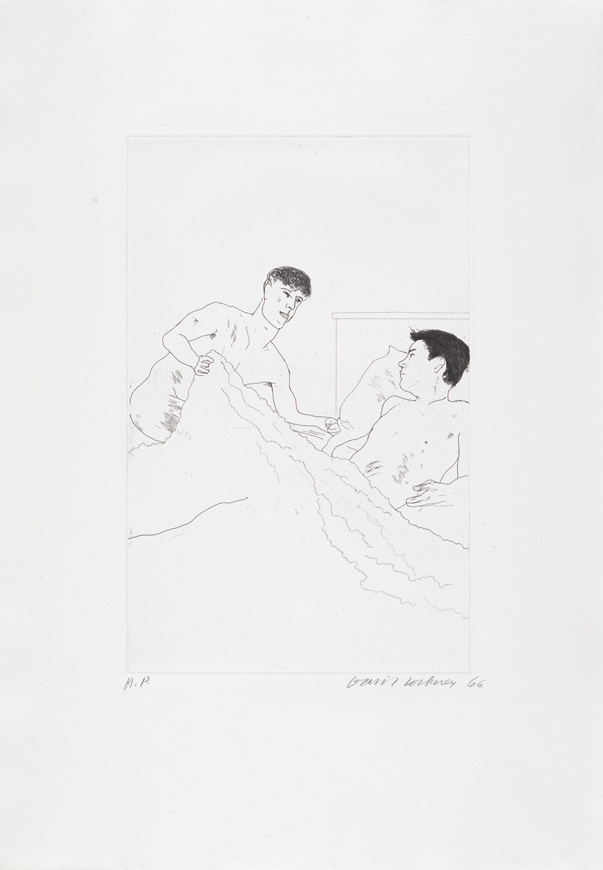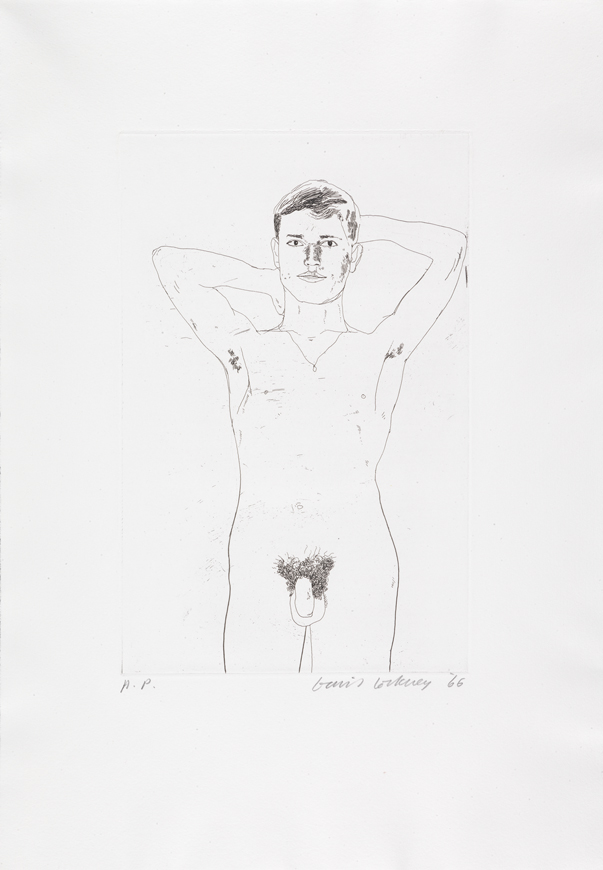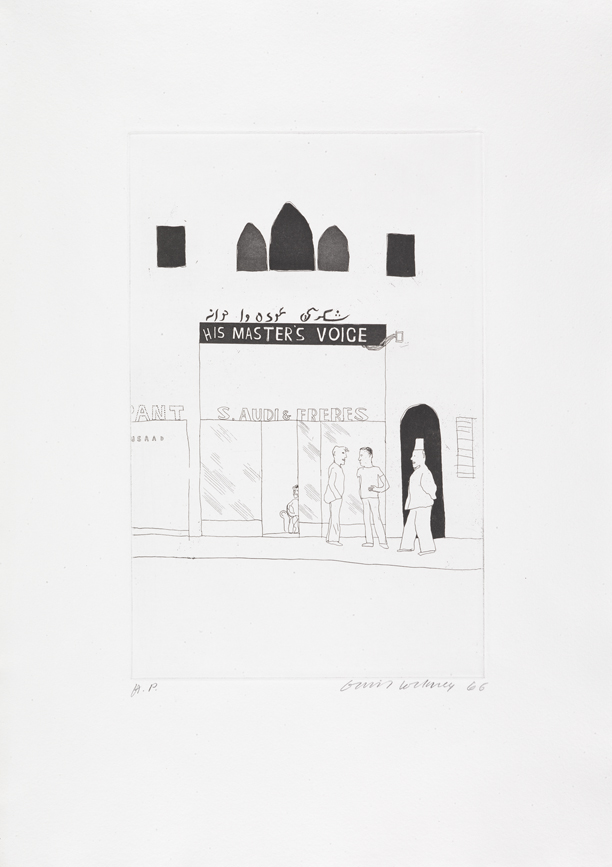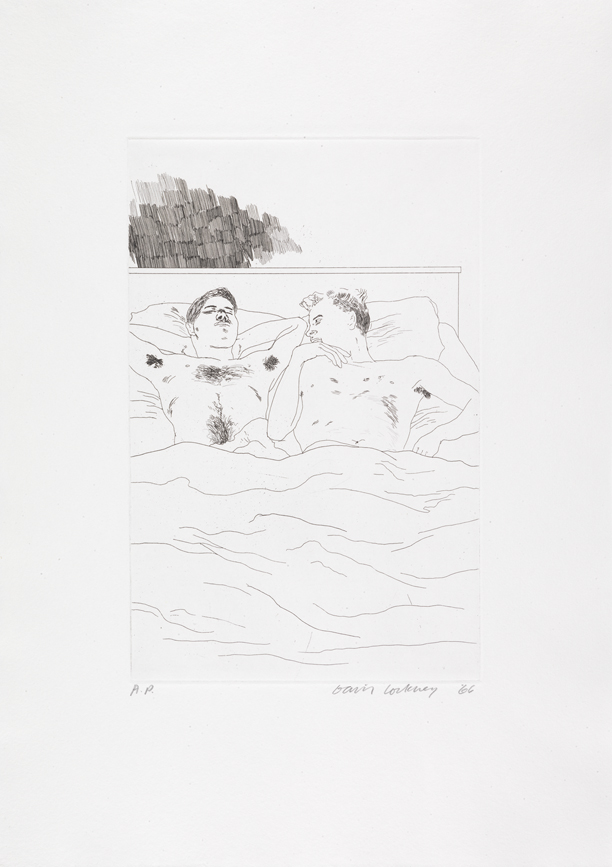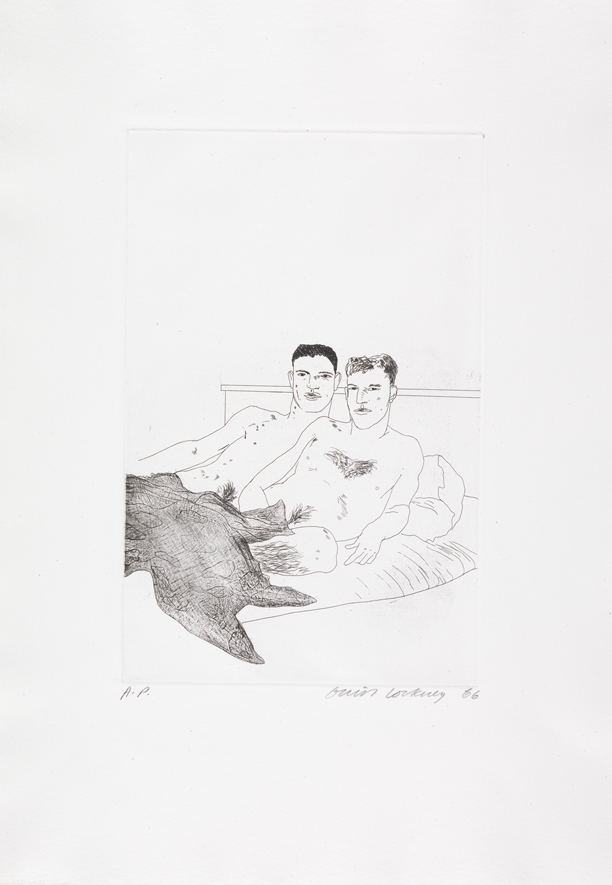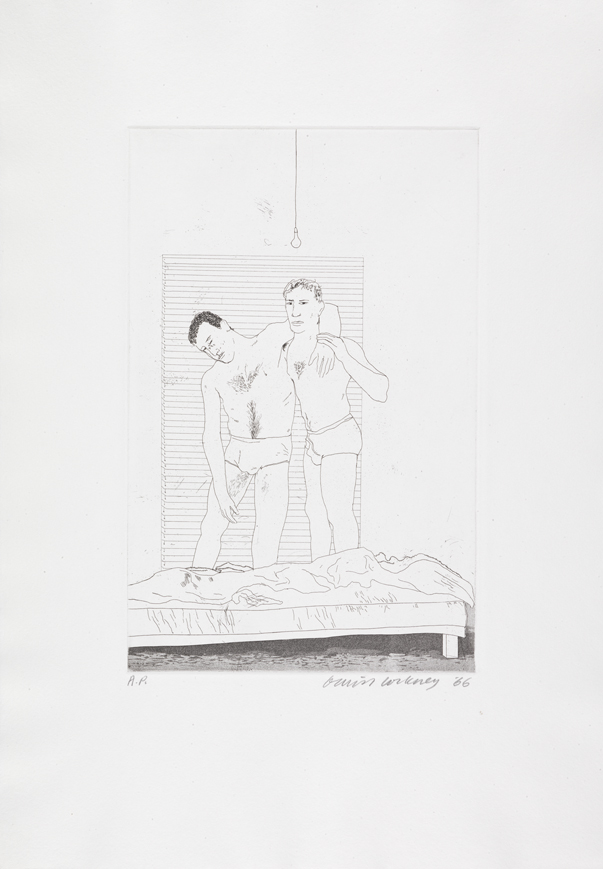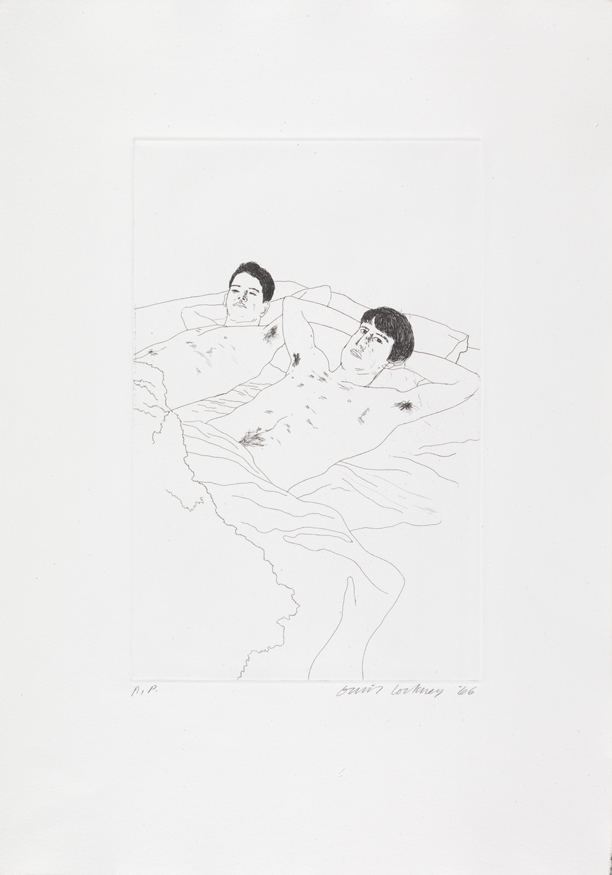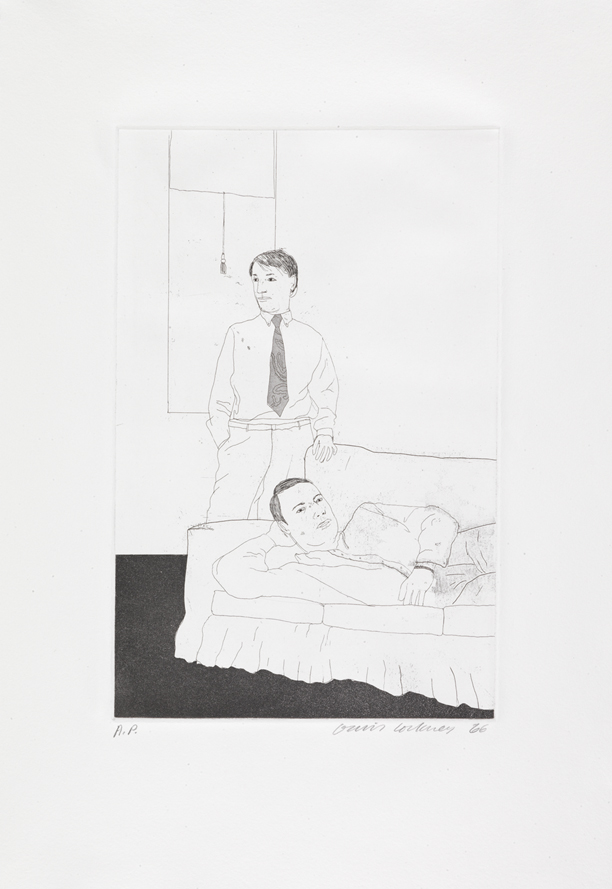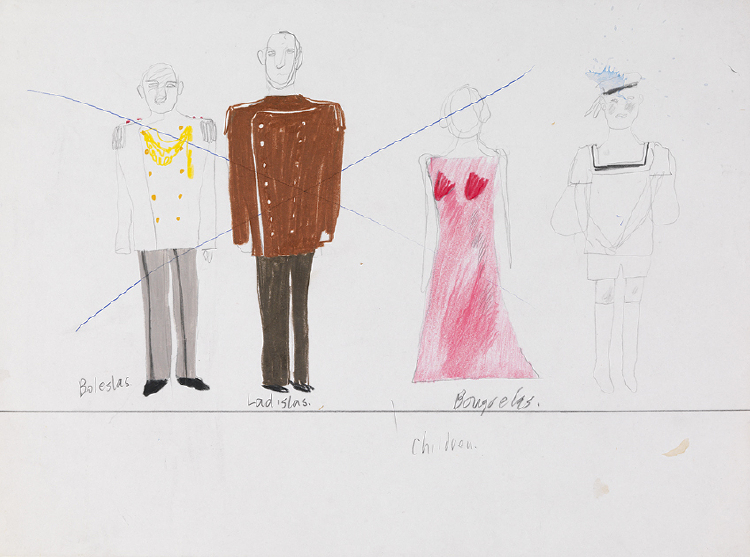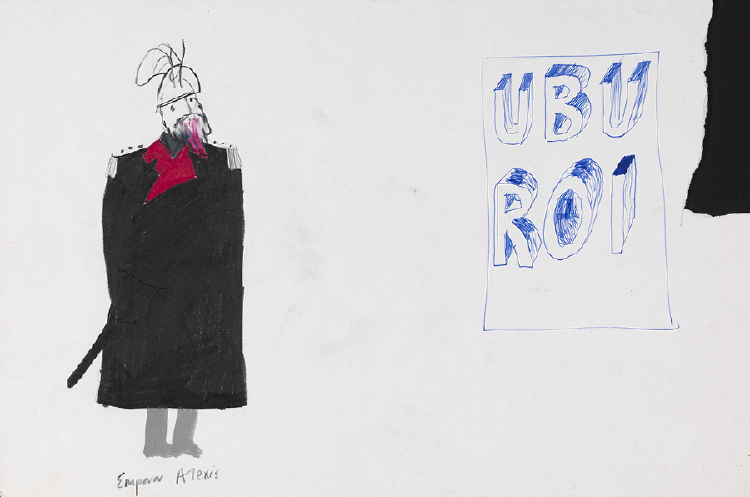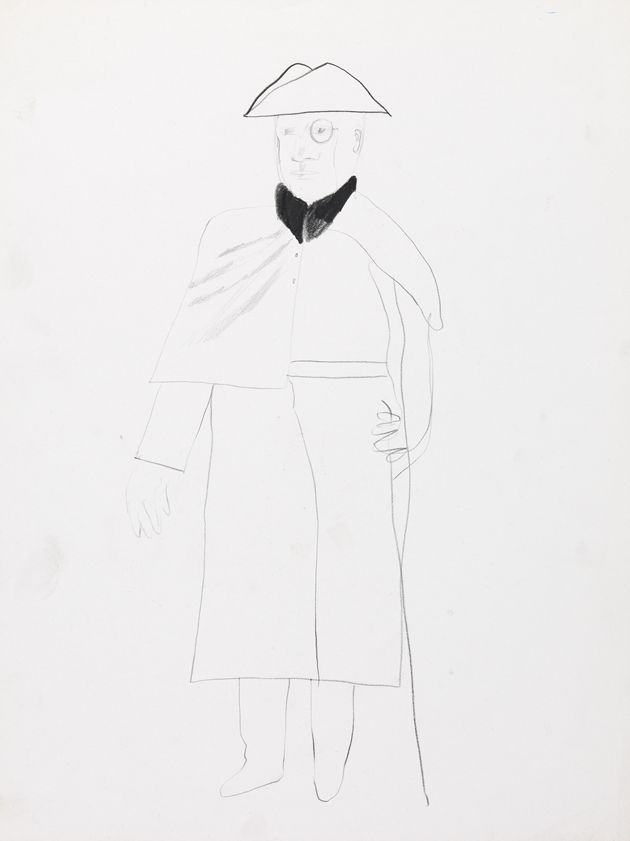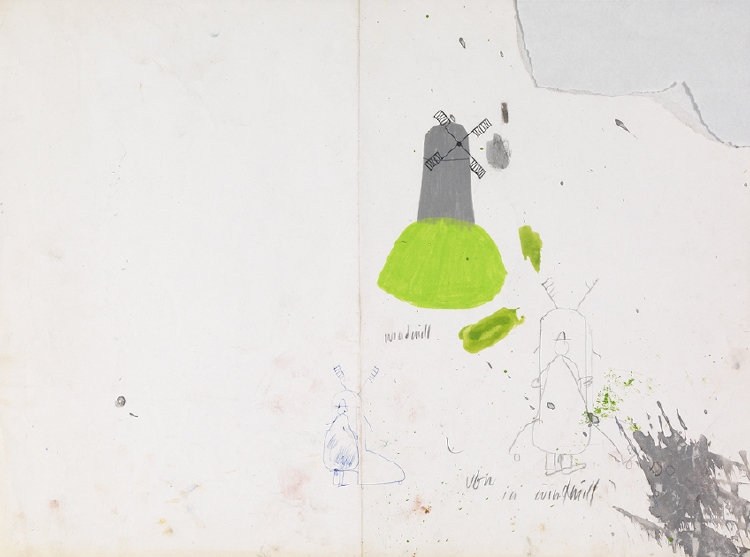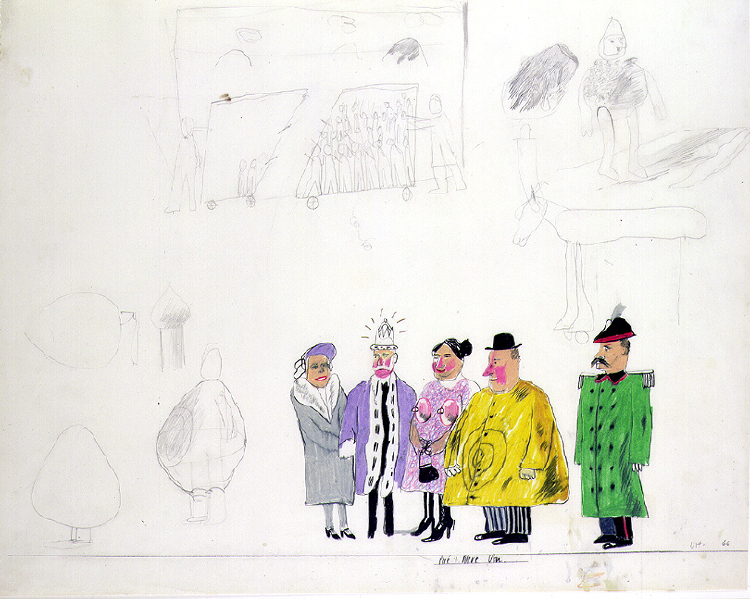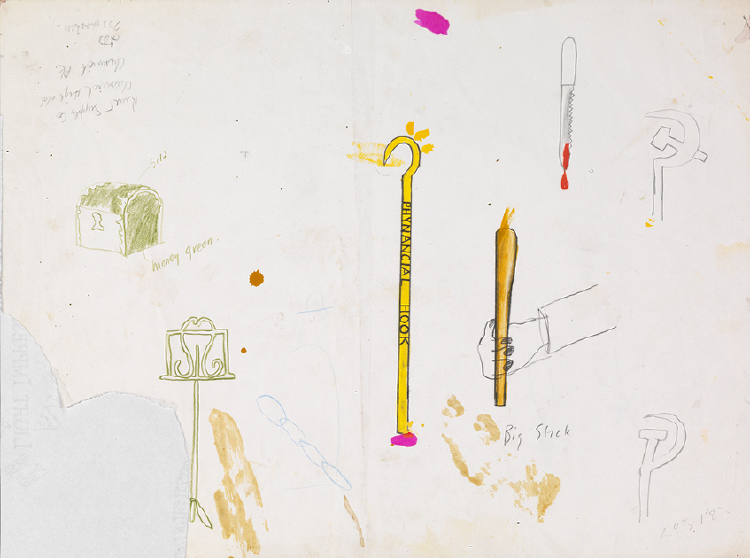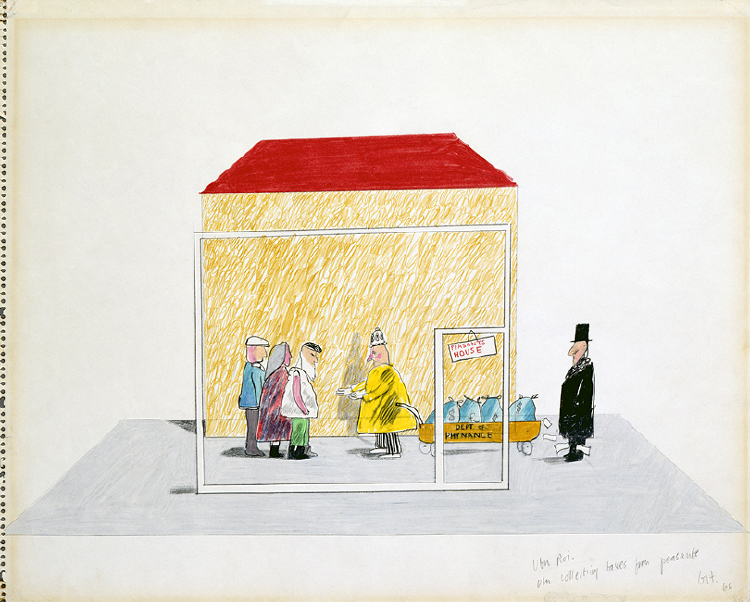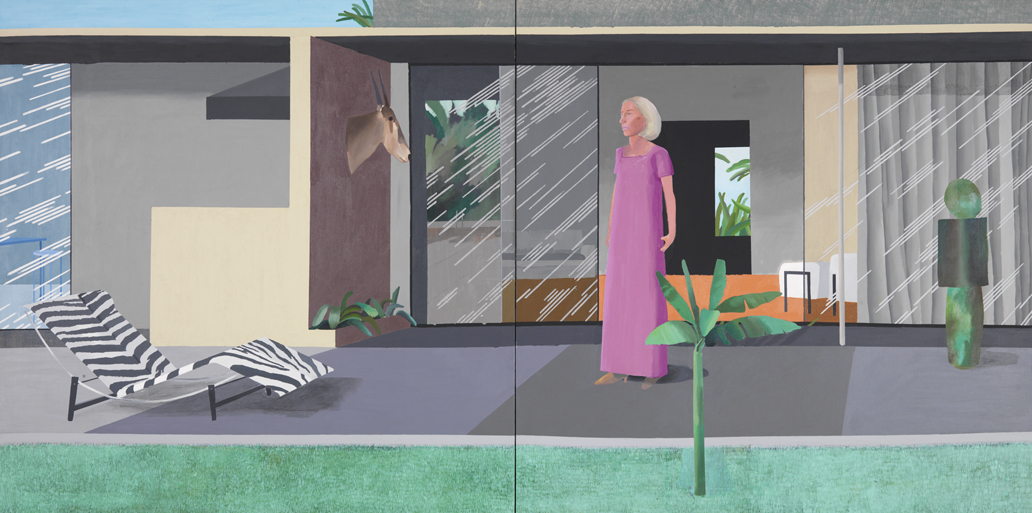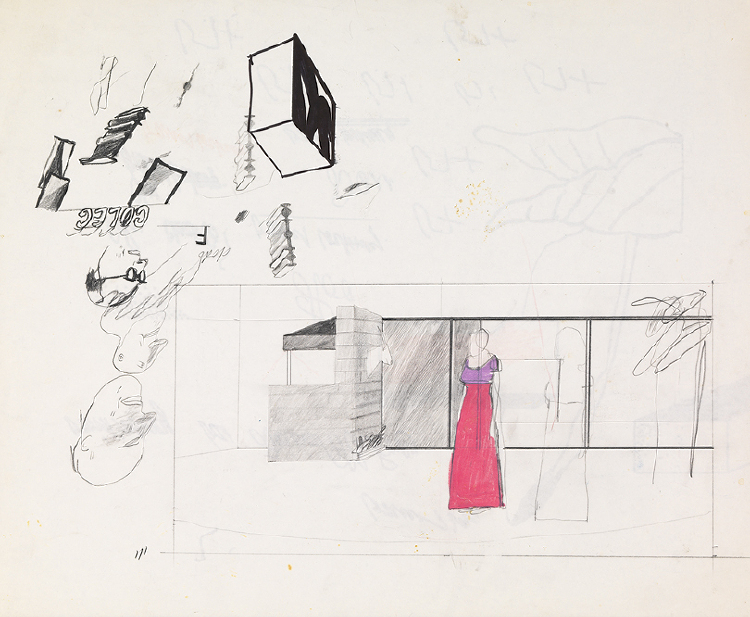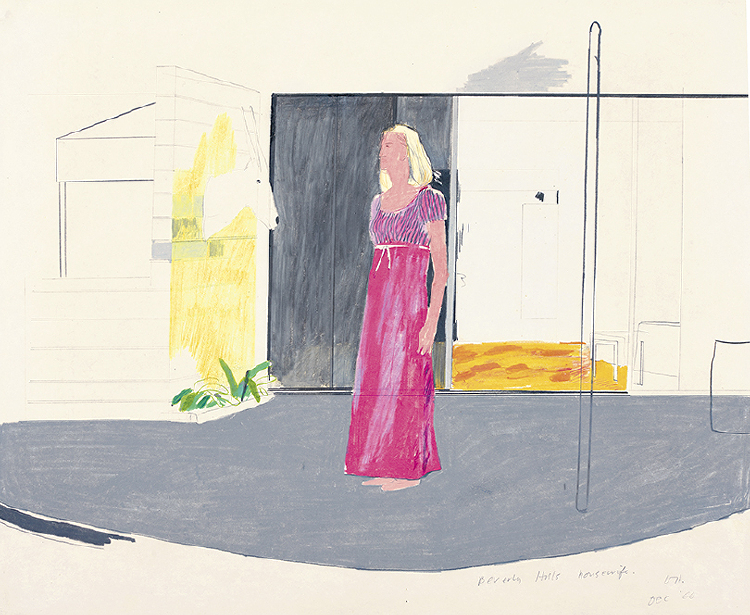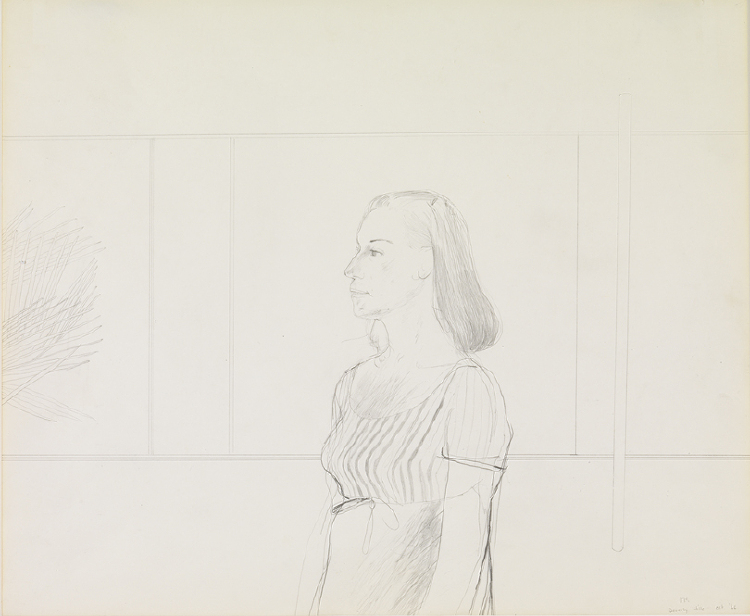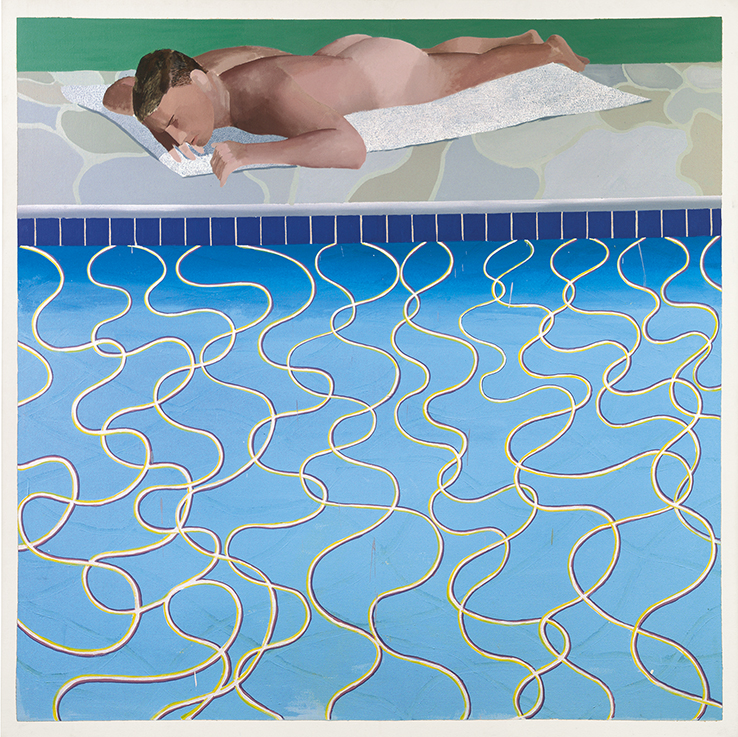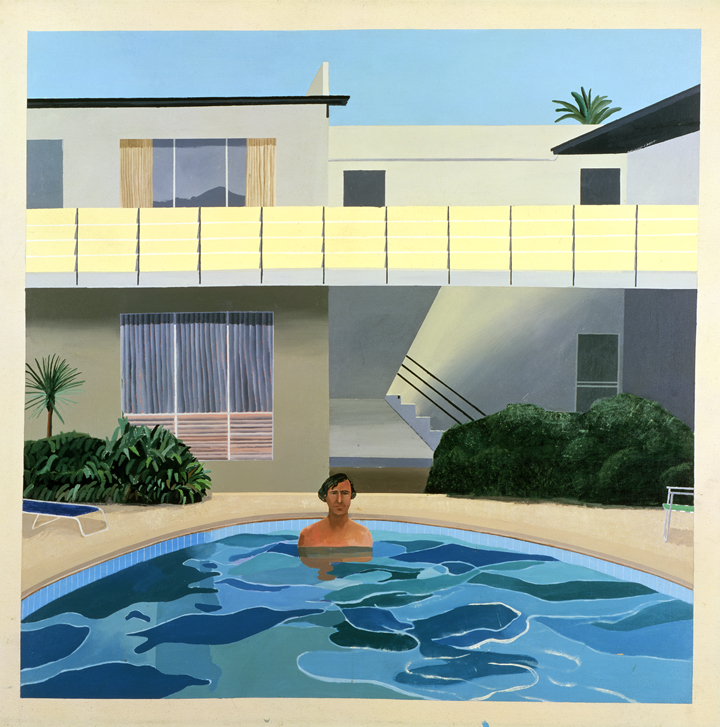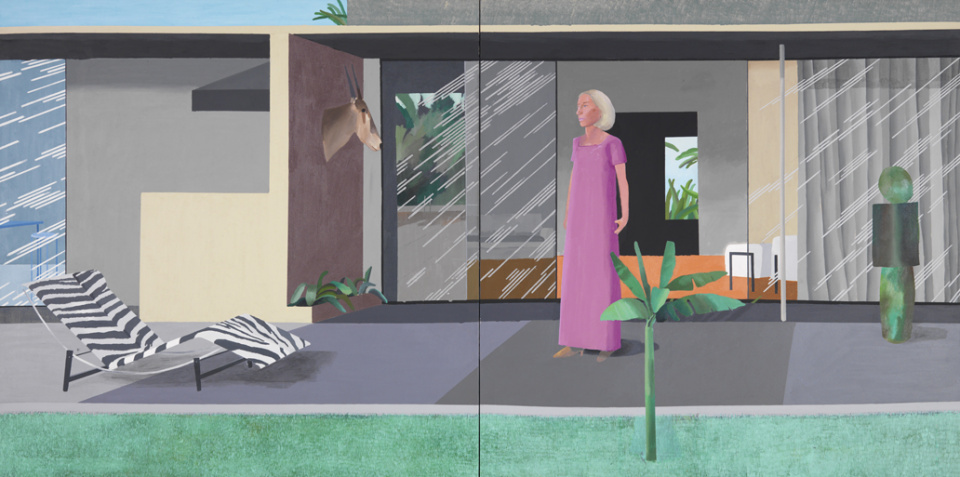
Beirut and Cavafy
At the start of the year, Hockney is in Beirut, making preparatory sketches for a set of etchings, Illustrations from Fourteen Poems from C. P. Cavafy, to be printed back in London with Maurice Payne. The images, mostly delicate line drawings of intimate scenes between men, are inspired by the writings of the Greek Egyptian poet Constantine Cavafy (1863–1933), [NESTED]whom Hockney has adored since his days at the Royal College of Art, in particular for his vivid, unapologetic evocations of homosexual desire.
Of course Cavafy’s poems are about gay love, and I was quite boldly using that subject then. I was aware that it was illegal, but I didn’t really think much about that at the time. I was living in a bohemian world, where we just did what we pleased. I wasn’t speaking for anybody else. I was defending my way of living.
Ubu Roi in London
For a revival of Ubu Roi at London’s Royal Court Theatre, Hockney does his first theater design work. He is reluctant to do it but enticed by the instructions of the absurdist playwright Alfred Jarry, which forbid traditional scenery.
In paintings before that I had been interested in what you might call theatrical devices, and I thought that in the theater, the home of theatrical devices, they would be contradictory …. So I agreed to do it without knowing how to do it. I took each scene and made a drawing of it. The concept was basically very simple: little painted backdrops, much smaller than the stage. They were like big paintings, about twelve feet by eight feet. They dropped down with big ropes on them like a joke toy theater.
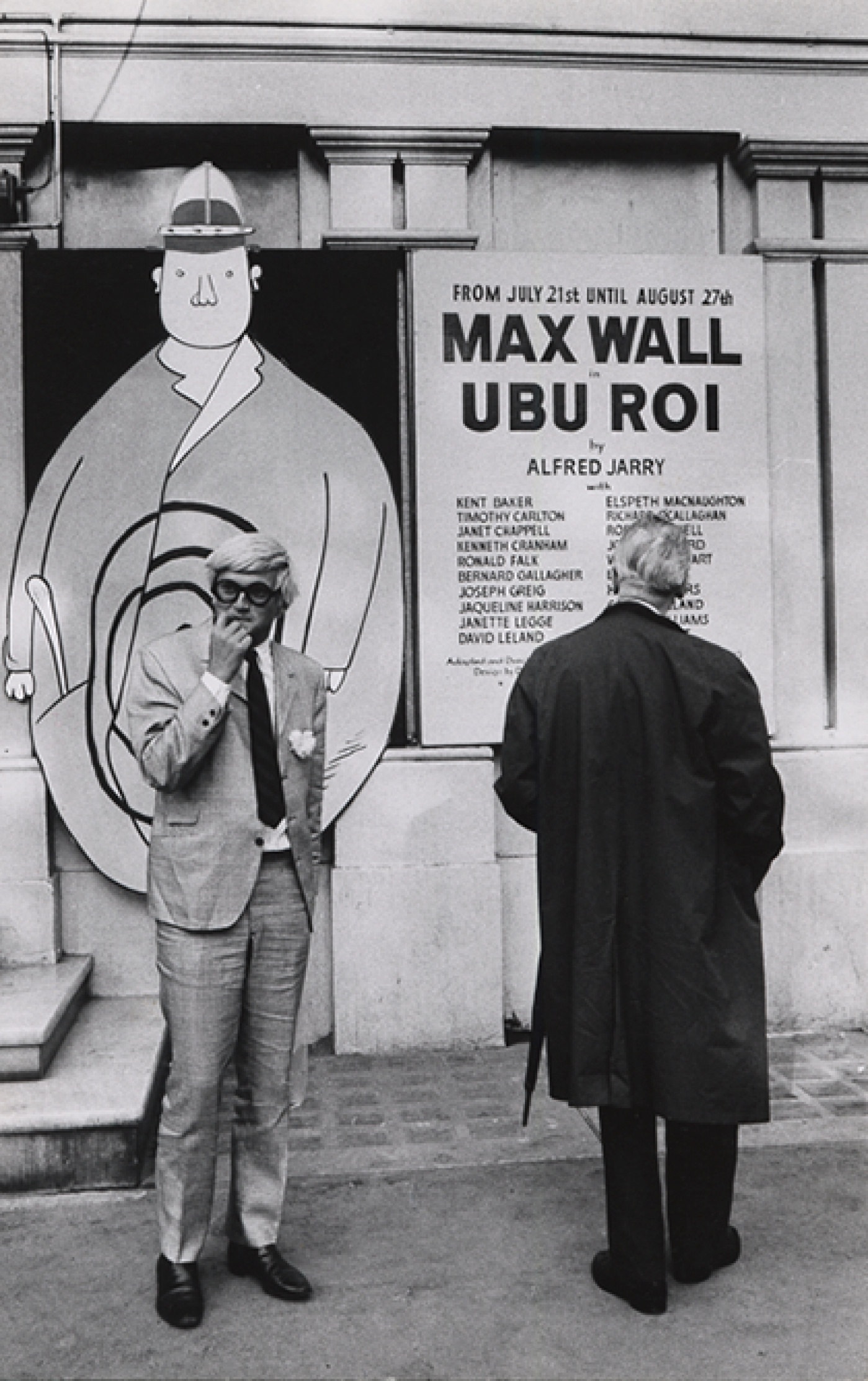
Los Angeles
Hockney returns again this year to L.A., and moves into a studio on Pico Boulevard. “Every time you put the gas on, cockroaches sped away from the oven, but I didn’t mind. I never had a phone put in, because right outside the door was a phone booth and I kept quarters and dimes to [NESTED]make phone calls.” Teaching drawing at the University of California, Los Angeles, over the summer, he meets Peter Schlesinger, who becomes his frequent model as well as romantic partner.

Southern Californian lifestyle
After meeting the arts patron Betty Freeman, Hockney captures the glamour of the Southern Californian lifestyle in the painting Beverly Hills Housewife, of a tall blonde staring out the window of her modernist, cactus-decorated home. The twelve-foot-long painting is made of two joined canvases due to the limited space in Hockney’s studio—“I could never get more than about five feet away”—and plays with the stylized depiction of rays of light hitting glass-wall surfaces. It is the first painting he bases on his own preparatory black-and-white photography; in doing so he rearranges the elements of Freeman’s house and garden to better suit the composition.



Reflections on water
In works such as Sunbather and Portrait of Nick Wilder, the effect of light landing on water is as much the subject of the paintings as their human figures.
I had become interested in the more general problem of painting the water, finding a way to do it. It is an interesting formal problem, really, apart from its subject matter; it is a formal problem to represent water, to describe water, because it can be anything—it can be any color, it’s movable, it has no set visual description. I just used my drawings for these paintings and my head invented.
Exhibitions
Solo
- David Hockney, Palais des Beaux-Arts, Brussels, Belgium (Feb 12–26).
- David Hockney, Galleria dell'Ariete, Milan, Italy (opens Mar 8, 1966); catalogue.
- Preparatory Drawings of the Sets for the Production of Ubu Roi; Twelve Etchings Inspired by the Poems of C. P. Cavafy, Kasmin Limited, London, UK (opens Jul 22, 1966).
Group
- The Marzotto Prize: Metropolitan Scene, Images and Object, Valdagno, Italy (Sep 1966), travels to Staatliche Kunsthalle, Baden-Baden; Louisiana Museum, Humlebæk; Stedelijk Museum, Amsterdam; Tate Gallery, London (Apr 22–May 21, 1967); and Musée Galliéra, Paris; catalogue.
Film
Film
- Love's Presentation, 28 min., Maya Films, a documentary by James Scott on the making of Hockney's Illustrations from Fourteen Poems from C. P. Cavafy.
